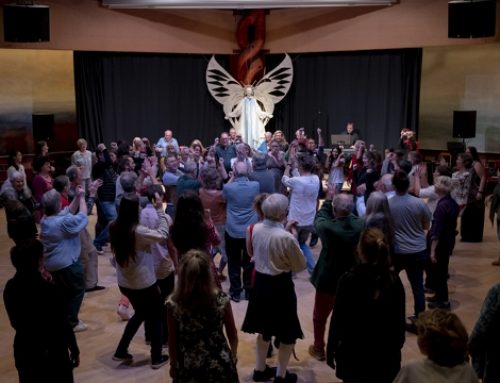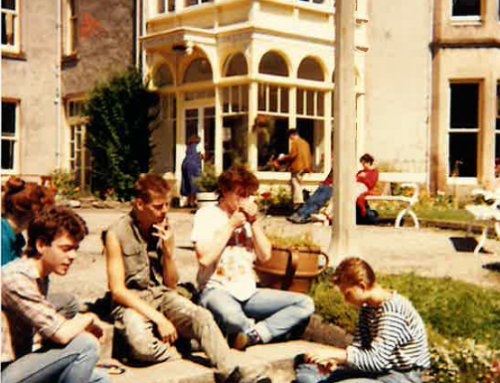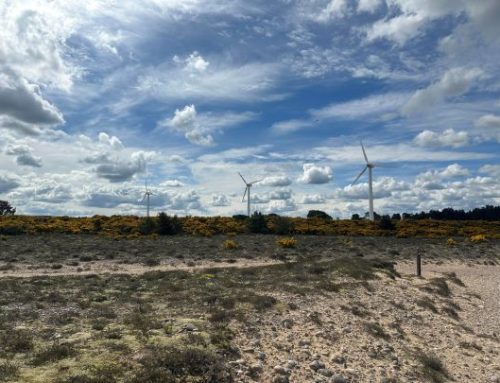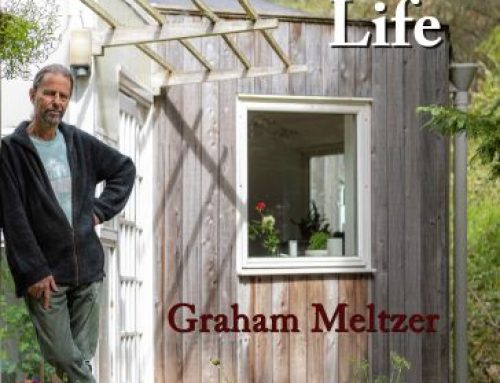The First Two Years in the Life of the Conflict Resilience Group
It feels to me significant that the Conflict Resilience Group (CRG) is creating the first entry of the Peacekeeping section of the Celebrating One Incredible Family website. That CRG has been asked to document its progress so far at this time shows that the CRG’s existence is finally landing within our community.
This contribution is my own personal reflection on the first two years of the CRG. Most of the CRG’s published material can be found on the New Findhorn Association (NFA) website, including an overview of our work, links to articles that have informed the group’s ways of working, and information relating to events that the CRG have held in our community.
The initial spark that brought the Conflict Resilience Group into being was lit at December 2021’s NFA community meeting. During that meeting a number of speakers said that they would like our community to adopt a culture of peace. After the meeting Gordon McAlpine invited everyone who had spoken in favour of creating a culture of peace to form a group. That is: Gordon McAlpine, Jane Hera, Jake Jay Lewin, Eva Ward, David Harrison and Roy Miles. Our seventh initial member was Moira Bergman, who heard about the meeting and asked to join.
Our name
We chose to include the term Conflict Resilience in the group’s name rather than Culture of Peace for two main reasons.
Firstly we felt that Peace can sometimes imply that conflicts are to be avoided. If this happened, it might stifle creativity or push feelings that might be seen as negative underground and even cause disagreements to fester. It could end up making relations between community members worse rather than better. Conflict Resilience, on the other hand, we think, implies that we want community members to be authentic and assertive and able to deal with conflict in as positive a way as possible. Our hope is that conflicts will last for shorter periods and that any periods of peace between them will be longer and deeper because of increases in shared understanding. Secondly we wanted to clearly distinguish the CRG from the NFA’s Constitutional Peacekeepers.
What inspires us
What has most inspired me about being part of this group is the frequency with which I and, indeed, other members of the group have commented on feeling so much more energised and present at the end of meetings than at the beginning. I have even sometimes wondered whether I was too busy to attend a meeting only to be glad I did because, by attending, I felt I had more space in my diary. I think that this phenomenon happens in part because of the care we have taken to listen to ourselves and each other, and because the group takes one step at a time and has not tried to run before we could walk. In short I think that we have tried to practise behaviours within the group that express a culture of peace and how we would like our community to be, and indeed how we would like the world to be.
Other aspects of the group that members have said that they like include:
- The way we switch between agenda topics and introspection as this gives space for us to unpack issues that we have, such as our beliefs about conflict;
- That we share roles and responsibilities; and
- That each member of the group has a good understanding of group process.
Of course there are ways in which we could improve, such as:
- Being conscious of when we choose to go off topic or enter into an in depth discussion on a subject tangential to the topic.
- Better preparation for meetings.
- Giving more active support to those group members who are carrying out work on behalf of the group.
- Always arriving early so that we can start on time.
- Improving contact with the community.
- Upping our pace of work.
What we have done so far
During its first six months the group:
- Established sound procedures and developed a strong bond.
- Decided on its provisional name of Developing Conflict Resilience Group.
- Created its driver statement and vision, mission and aims.
The types of procedural issues we discussed included:
- Whether the CRG should become the NFA’s Peacekeeping Petal or should we be an integral part of it. This issue remains unresolved.
- What types of events should the CRG offer and which types of events should the CRG signpost people to or sponsor? The CRG has decided to put on events that explore or teach aspects of Conflict Resilience or a Culture of Peace including Witnessing Circles that enable participants of teaching events to reflect on what has arisen within them as a result of these other events. Thus far most of our events have been open to the whole community although some have been for specific leadership groups e.g. NFA Council.
Those activities that it decided it would sign post or sponsor include sessions relating to specific conflicts.
There is ongoing discussion on what the CRG’s role should be when teaching staff groups for which employers have particular agendas. - Current conflicts in our community and the CRG’s role in them.
During the rest of 2022 the CRG chose to:
- Map ways in which individuals and communities reinforce peace using a method called the Peace Shield.

Peace shield photo Roy Miles
- Make connections with significant organisations in the community. For example, we felt that the New Findhorn Association (NFA) was the organisation that we could most usefully align with. Much of our information is currently published on the New Findhorn Association Website.
- The CRG also gained an endorsement from the Collaboration Circle (ColCi).
- Create the CRG focaliser’s email address to allow anyone in the community to contact us.
- Report on the work of the CRG during Community meetings.
The CRG is now inviting practitioners to register with them so that the CRG can signpost members of the community to appropriate practitioners when support is needed for mediation or to encourage a culture of peace. And we are putting on more events including experiential workshops about awareness of power and rank and the effect this has on our behaviour and the functioning of our community. The CRG also produces articles which have been published in the Rainbow Bridge, which tell its readers about the CRG and the findings that the events have produced, e.g. the Dominic Barter exercise and the themes from the Community Gathering in September 2022.
Our second year has included a few challenges from a number of directions. Despite our shared belief in the work and the original group members’ desire to stay as part of the group, a number of our members have chosen to either prioritise other voluntary groups, family, their own health and/or paid work. One member has resigned from the group, another works with us on occasional projects and three others have taken sabbaticals. Yet our work continues.
Going forward
In the future we aim to focus on:
- Establishing and then supporting the operation of easily accessible systems that support conflict reconciliation.
- Designing a Directory of trainings and practices.
- Continuing to investigate the needs of the community regarding conflict resilience – what we already have in place, evaluation of what works well, what are the problems, what are people looking for?
- Continuing to support people to recognise what resources (both internal and external) are available to them, to support them to develop and participate in a culture of active peace and work with their personal responses to conflict.
- Completing our register of people with the skills to support active peace – inclusiveness, non-violence and understanding, communication skills – and who are able to facilitate conflict reconciliation within our community.
- Establishing ways of funding the time and skills involved in this endeavour. All the work of the CRG thus far has been done on a voluntary basis, which means that what we do is done at minimum cost, but this means that those who need to earn money find it hard to participate in the work of the CRG.
- Making training available and accessible in a variety of modalities to develop a collective skill set and tool box for conflict reconciliation.
- Assisting NFA to write those policies relevant to the CRGs work.
- Informing community leaders about the work of the CRG, particularly those who are proposing or even organising groups to carry out work that might overlap with the CRG in order that we work together.
- Continuing to explore the CRG’s role in the structure of the community and the creation of the Local Place Plan.
- Continuing to consider whether the CRG should seek to become the NFA Peacekeeping petal.
- Exploring whether conflict in the community is affected by the lack of clear governance structures.
- Collaborating with other groups such as the Collective Health Well Being Group to create events and trainings, e.g. to expand the role of witnessing circles to include exploring how to co-regulate each other in a trauma informed way.
To do the above work we imagine that we may need to invite new members into the CRG and create sub-groups in which individuals can contribute to those aspects of the work of the CRG that they are interested in, perhaps without needing to attend our fortnightly meetings.
However, although there is a great deal of work for the CRG to do, we feel we have made a good start.
Roy Miles, Eva Ward, David Harrison, Jane Hera, Gordon McAlpine, Jake Jay Lewin, Moira Bergman

Born in Perth, Scotland, worked in England as a Computer Programmer, Occupational Therapist and Business Analyst before moving to The Park, Findhorn. Married to Rebecca. Did Experience Week in 1982.











Leave A Comment